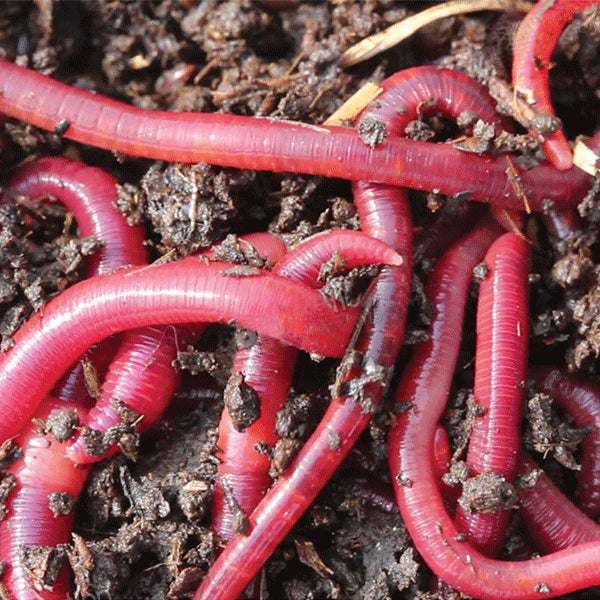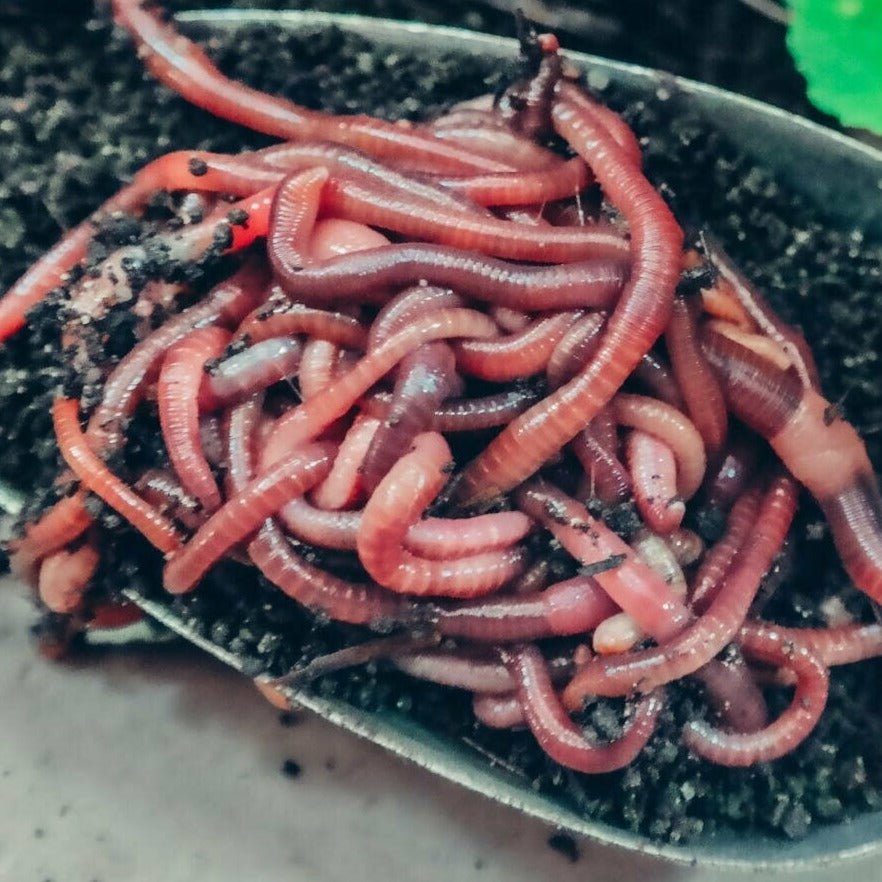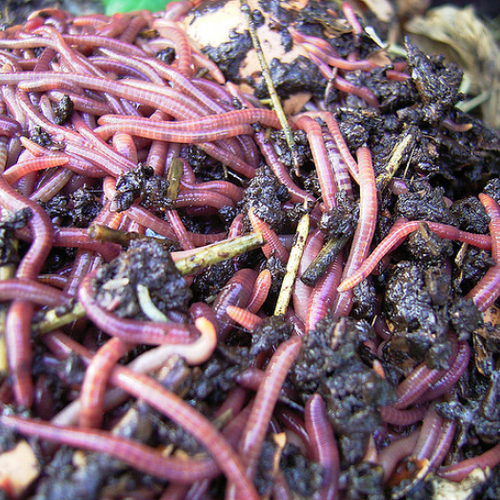The Function of Red Wigglers in Sustainable Horticulture
The combination of red wigglers into sustainable horticulture techniques supplies a compelling method to enhancing soil health and wellness and lowering natural waste. The ramifications of making use of red wigglers prolong past plain composting; their duty in forming a more lasting future warrants a much deeper exploration of their advantages and practical applications.
Understanding Red Wigglers
Red wigglers, scientifically referred to as Eisenia fetida, are a varieties of earthworm renowned for their role in lasting horticulture and composting practices - red wigglers. These worms prosper in disintegrating organic issue, making them especially efficient in transforming kitchen area scraps and lawn waste into nutrient-rich garden compost. Unlike traditional earthworms, red wigglers have a higher resistance for varying moisture degrees and can grow in atmospheres with plentiful organic product
(Lake Hickory Worms,)Characteristically, red wigglers are smaller sized than their earthworm equivalents, generally measuring between 3 to 4 inches in size. They have a reddish-brown pigmentation and have a fractional body framework that assists in their burrowing and feeding activities. These microorganisms are hermaphroditic, implying each individual possesses both male and women reproductive body organs, which enables reliable populace development under optimum problems.
The habitat preferences of red wigglers consist of wet, dark environments rich in organic material, such as garden compost bins or worm ranches. Their ecological duty extends beyond composting; they are important in aerating the dirt and assisting in nutrient biking, which inevitably adds to much healthier yard ecological communities. red wigglers. Comprehending the biology and behavior of red wigglers is necessary for those looking for to apply effective vermicomposting in lasting horticulture
Benefits of Vermicomposting
Vermicomposting offers countless advantages that boost lasting horticulture methods and contribute to ecological health. One of the key benefits is the change of organic waste right into nutrient-rich compost, which enhances soil framework and fertility. The spreadings generated by red wigglers are packed with valuable bacteria and vital nutrients, making them an excellent natural fertilizer.
Additionally, vermicomposting dramatically minimizes land fill waste. By diverting cooking area scraps and lawn waste from garbage dumps, this method not just decreases methane discharges-- a potent greenhouse gas-- but likewise promotes a round economy, where waste is repurposed as a resource.
An additional advantage is the improvement of dirt aeration and drainage (red wigglers). The burrowing task of red wigglers creates networks in the dirt, permitting air and water to penetrate more quickly, therefore fostering a healthier origin system for plants
Furthermore, vermicomposting can be done on a little range, making it accessible for urban gardeners and those with limited room. This approach urges ecological stewardship and awareness, as people become a lot more engaged with their waste administration practices. Inevitably, vermicomposting stands for a sustainable, efficient, and green strategy to gardening that profits both plants and the earth.
Just How to Start Vermicomposting
Beginning your own vermicomposting system can be a rewarding undertaking that boosts your lasting gardening practices. To start, choose an ideal container, such as a plastic bin or wood box, with good drain and ventilation. The size will rely on the volume of kitchen scraps you create; a bin of 10-14 gallons generally suffices for a house.
Next, prepare the bed linen material. Shredded paper, cardboard, and coconut coir are outstanding options, supplying a comfortable environment for the red wigglers. Objective for a bed linens depth of concerning 4-6 inches, which must be moist however not soggy.
When the bedding is developed, present your worms. Red wigglers (Eisenia fetida) are the most ideal for composting. Start with about one extra pound of worms for each 2-3 pounds of kitchen area scraps weekly.
Begin including cooking area waste, staying clear of meat, dairy, and oily foods, as these can bring in insects and develop odors. Routinely check the bin's wetness degrees and temperature, ensuring it stays within the ideal variety for worm task. With these preliminary actions, you'll be well on your means to producing nutrient-rich garden compost for your yard.
Maintaining a Healthy Worm Bin
A growing worm bin requires constant treatment and focus to maintain an ideal atmosphere for the red wigglers. Trick factors to keep track of consist of moisture levels, temperature level, and food supply. Keeping a moisture level akin to a wrung-out sponge is important; way too much water can lead to anaerobic conditions, while too little can dehydrate the worms.
Temperature is likewise important, as red wigglers grow in a variety of 55 to 77 degrees Fahrenheit. Extreme temperatures can stress the worms, potentially causing mortality. Placing the bin in a climate-controlled area or utilizing protecting products can assist manage temperature variations.

Lastly, oygenation is crucial. Regularly turning the bedding and making use of a fork or shovel can stop compaction and promote air movement, guaranteeing a healthy and balanced, successful environment for the red wigglers. By sticking to these practices, garden enthusiasts can maintain an effective worm bin that sustains sustainable these details horticulture efforts.
Effect on Soil Health And Wellness
Enhancing soil health and wellness through making use of red wigglers is a fundamental element of lasting gardening. These worms, recognized scientifically as Eisenia fetida, play a crucial function in boosting soil structure and fertility. By eating raw material, red wigglers damage down complex products right into simpler substances, a procedure known as vermicomposting. Completion item, worm castings, is rich in necessary nutrients, including nitrogen, phosphorus, and potassium, which are crucial for plant development.

(Where To Buy Worms In North Carolina)Researches have shown that soils improved with worm spreadings display raised microbial task and boosted fertility, resulting in greater plant returns. By integrating red wigglers into horticulture practices, gardeners not just enrich their dirt yet also add to an extra sustainable agricultural system, emphasizing the interconnectedness of dirt wellness and environmental stewardship.

Verdict
Finally, red wigglers significantly add to sustainable horticulture with their efficient vermicomposting practices. Their capacity to transform natural waste into nutrient-rich garden compost boosts dirt fertility and sustains a diverse microbial ecological community. Furthermore, their burrowing activity improves dirt aeration and water retention, benefiting plant health. By advertising waste reduction and promoting a round economic situation, red wigglers emerge as essential parts in environmentally friendly horticulture campaigns, underscoring their important role in ecological sustainability.